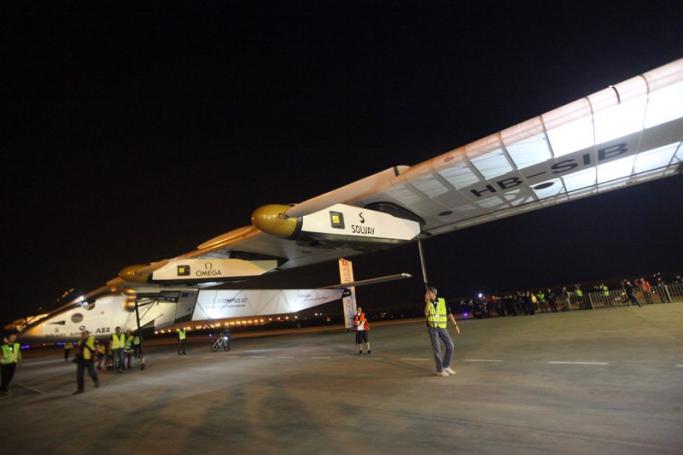Solar Impulse 2 landed early on March 31 in China, the world's biggest carbon emitter, as it completed the fifth leg of its landmark circumnavigation of the globe powered solely by the sun.
With pilot Bertrand Piccard at the controls, the revolutionary plane landed in Chongqing airport at 1:35 am local time after a 20-and-a-half hour flight from Myanmar, its vast wingspan lit up by rows of led lights.
The plane had been expected to make just a brief stop in the southwestern city and quickly travel on to Nanjing, about 270 kilometres from Shanghai, but that has been delayed due to weather and safety concerns, with the team now expecting to stay a few days waiting for better conditions for the trip east.
"We are tired but we are still very, very happy to be in Chongqing," said mission engineer Mr Michael Anger on the project's website.
"In China it was demanding, this flight, especially for Bertrand but also for the team preparing two flights in a row and then this afternoon cancelling the second flight due to bad weather in Nanjing."
Mr Piccard, one of the two Swiss pilots of the solar-powered plane, battled extreme cold as low as -20 degrees Celsius (-4 Fahrenheit) in the cockpit and the general unpredictabilities of flying above the mountainous Chinese provinces of Yunnan and Sichuan.
On a previous circumnavigation, Mr Piccard passed over China in a specially designed balloon, but only after he flew to Beijing personally to negotiate the trip with conditions the balloon avoid large swathes of the country.
Flying at high altitude for most of the journey, Mr Piccard had to use additional oxygen on the 1,375-kilometre route.
The flight from Mandalay to Chongqing was the most difficult, Mr Raymond Clerc, flight director for Solar Impulse, said on a video interview on the project's website.
The team behind Solar Impulse 2, which has more than 17,000 solar cells built into its wings, hopes to promote green energy with the circumnavigation attempt.
Ridiculed by the aviation industry when it was first unveiled, the venture has since been hailed around the world, including by UN chief Ban Ki-moon.
Muscat was the first of the 12 planned stops on the plane's maiden journey around the world from Abu Dhabi, with a total flight time of around 25 days spread over five months.
© AFP
You are viewing the old site.
Please update your bookmark to https://eng.mizzima.com.
Mizzima Weekly Magazine Issue...
14 December 2023
Spring Revolution Daily News f...
13 December 2023
New UK Burma sanctions welcome...
13 December 2023
Spring Revolution Daily News f...
12 December 2023
Spring Revolution Daily News f...
11 December 2023
Spring Revolution Daily News f...
08 December 2023
Spring Revolution Daily News f...
07 December 2023
Diaspora journalists increasin...
07 December 2023
Naungcho to be transformed into tourist destination












